Guitar concert revived
With her "Concertino Hans Haug" project, Marisa Minder wants to give a little-known work a place in concert life.
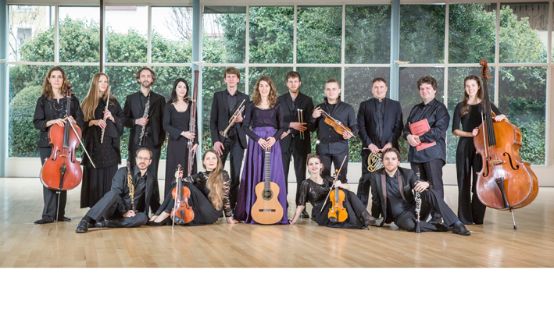
The conductor and composer Hans Haug, born in Basel in 1900 (died in Lausanne in 1967), conducted many ensembles in Switzerland and abroad, including the Beromünster Radio Orchestra from 1938 to 1943. In the 1930s, he wrote the operas Don Juan in a foreign land and Madrisa. The soldiers' folk game became very popular during the Second World War Gilberte de Courgenay. According to MGG the focus of his work was on stage works of various kinds. Among his instrumental works, concerts stood out in particular, including the Concertino for guitar and small orchestra. It was awarded the first prize for composition by Andrés Segovia at the Academia Chigana in Siena in 1951.
Marisa Minder, a guitarist who grew up in Windisch and now lives in Basel, has been studying Hans Haug's works for guitar for many years. With her project "Concertino Hans Haug", she aims to bring one of Haug's best, yet least known compositions to concert halls. After its premiere in 1970, the work disappeared from the scene and no recordings of it have been made to date. After four performances, the project is to be concluded with a CD production.
The last concert will take place on February 28 at the Ackermannshof in Basel. Alexander Zemtsov conducts the project orchestra, with Dmitry Smirnov as concertmaster.
Space to live and make music
Urban Frye's "recyclable" Music Box will soon be available.
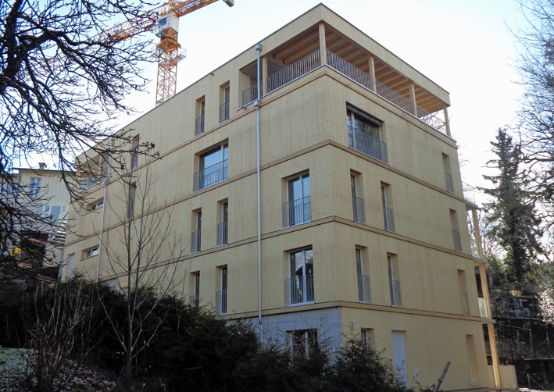
The "Music Box", an extraordinary building located directly on the Reuss in Lucerne, is being inaugurated these days. Students of the Lucerne School of Music can live here and practice for hours without disturbing anyone, either inside or outside the building. And that's not all: the sound-optimized building is made of ecologically sustainable and energy-efficient materials. And it is "recyclable". As a temporary timber construction, it can be dismantled and rebuilt elsewhere at any time.
The building offers 25 one-room apartments, rehearsal rooms and a mini-concert hall
including grand pianos and other equipment. Even now, before the opening, half of the apartments have already been let.
This remarkable project was initiated and realized by the versatile Lucerne entrepreneur and cultural scientist Urban Frye. On the one hand, he wants to offer aspiring musicians good living and working conditions.
Like everywhere else, it is very difficult to find a place to live in Lucerne where music can be played for hours every day. On the other hand, the building is evidence of active political commitment: the plot on which the house now stands is located in one of the residential areas that are to make way for a new main traffic axis, the so-called Spange Nord, in around ten years' time. Opposition to this has long been building in the city of Lucerne. This extraordinary new building is one of them.
Link
Chur gets a house of choirs
The Chur City Council has held an ideas competition for the use of the former Chur City Library building. The House of Choirs and the Zapperlot children's and youth theater on the top floor are now being considered for two floors.
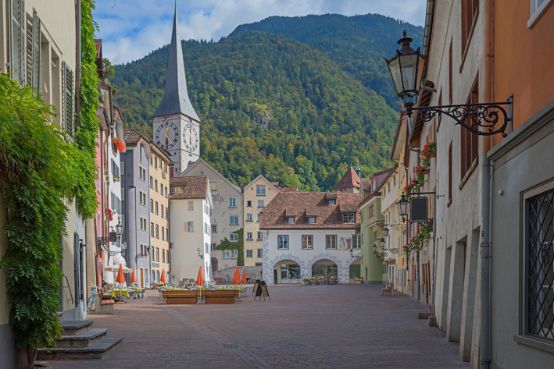
There was a great response to the ideas competition, with the city receiving a total of 52 project ideas. All submissions were reviewed by a multi-member evaluation committee according to predefined criteria.
The House of Choirs aims to position Chur as a singing city and create a meeting place for guests and locals. The idea is based on the tradition of choirs in Graubünden. The mix appeals not only to musicians, but also to strollers through the old town, cultural travelers, song lovers and choirs from all over the world, according to the city's press release.
The Zapperlot project promotes children's and youth culture, shapes the coexistence of generations in the city of Chur and creates a cultural space for a wide range of target groups. Theater Zapperlot has been in existence for 20 years and has been looking for new premises for a long time.
Happiness Machine?
The Stuttgart Eclat Festival underpins its reputation as a performative laboratory in the festival landscape.

The Stuttgart Eclat Festival sees itself as a "seismograph for trends in social developments". For several years now, it has focused on presenting works that touch on aspects of current realities in interdisciplinary formats or even raise the possibility of a change in social perspective. Whether such high expectations in the confusing jungle of art music, media art and performance are fulfilled is always measured in the end by the individual projects. An impressive 37 world premieres ensured diversity (both thematically and qualitatively), covering a respectable range of current musical fields. Between pop Schubert homage (Eivind Buene), squeaky sex doll use as ensemble sound (Miquel Urquiza) and several hours of piano grinding (Philipp Krebs/Neus Estarellas), the table was richly set. A cursory gender analysis (excluding performers) revealed an approximate ratio of 37 (women) to 24 (men).
Hairy happiness from the lab
The most promising setting in the "Concept" section of this year's festival promised to be the three-hour Happiness Machinewhich brought together ten female composers in pairs with ten female filmmakers (why only women?) to explore the principles of the "Economy for the Common Good" under the auspices of Klangforum Wien. An idealistic reflection on the current state of the world and a possibly more sustainable economic order were the order of the day. However, when music becomes political, it can be difficult but interesting, but when art comes across as so obviously "politically correct", things get hairy. The Klangforum members' staged lecture interludes, which exuded the charm of an adult education seminar with autobiographical insights into being a musician, moralistic monologues and unnecessary self-congratulation, were rather counterproductive from an artistic point of view. As expected, the ten film/music collaborations varied in terms of content and style, although they all took place in the medium of animation (why actually?): Light-hearted children's book aesthetics, abstract structural processes, disdainful documentary (Samantha Moore/Malin Bang about a family textile business in Bloomers), expressively "overpainted" history (Michelle Kranot/Iris ter Schiphorst and the July Uprising in Vienna in 1927 in Suggestion of Least Resistance) or abysmal insights into the business practices of virtual world experience (Ana Nedeljkovic/Hanna Hartman in the eponymous Happiness Machine) was part of the visual approach. Musically, this took place between the extremes of pure acoustic mimicry (Malin Bang) and music that could also stand on its own in its energetic force (Ying Wang in Music Box). Why at the end of the sonic-visual pairings still Brine by Rebecca Saunders was another question mark in the overall dramaturgy, which was unfavorably bloated and detracted from the individual contributions.
-
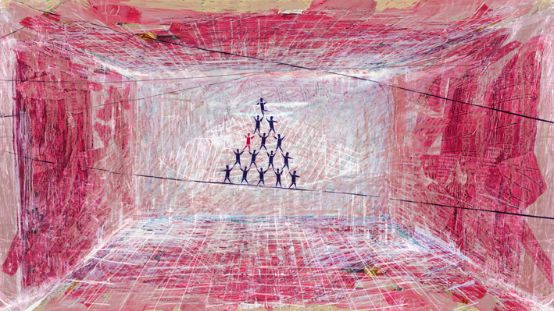
Film still from "Music Box", performed by Klangforum Wien as part of "Happiness Machine". Ying Wang's music could also stand on its own in its energetic power. Joanna Kożuch / Ying Wang
Music as music
The Stuttgart Composition Prize is a thankful eclat ritual, this time expertly awarded to Ondřej Adámek and Ole Hübner. Hübner's Three people, skyscrapers and palm trees in the background and the sea on the left (2016/17) was one of the most exciting pieces of the festival in its complexity, whose kaleidoscopic heterophony in a lavishly dimensioned cast (large ensemble, four speakers, 8-channel audio playback and electronics) opened up volatile, loose but rich associative spaces. No image description, rather open scenes of an imaginary "audio theater", which is autobiographically inspired, but must be filled with life by each listener for themselves. This was already an indication: The really interesting listening experiences took place widely in the "conventional" concert format, an indication that music as music beyond media art is not as dead as people currently like to talk about.
Polyrhythmically dense witchcraft
An expert in complex sound textures with real and inherent structures is Michael Pelzel, the lone Swiss personality in the field. His Hagzusa and Galsterei for 24-part choir, double bass clarinet and percussion on a text by Dominik Riedo was tailor-made for Rupert Huber in its cultic-ritual style and his SWR vocal ensemble threw themselves into it ecstatically with him. Pelzel's vocal evocation of death, the devil and medieval witchcraft was a success with the Stuttgart audience due to its harmonic and polyrhythmic density. On the other hand, Christian Wolff's Voices voices which began as Webern had earlier and then escaped "on light boats" with encyclopedic zeal through all conceivable forms of vocal music between canon and aleatoric.
Porcelain in the alchemist's kitchen
The acclaimed finale was provided by the now stronger SWR Symphony Orchestra with premieres ranging from large to powerful. Vykintas Baltakas created in Sandwriting II a continuum of fractures, where dramatic gestures and motif complexes were constantly layered, nested and driven forward in new and different ways, as if symphonic molecules had been brought into self-referential rotational processes. The late Romantic points of reference could then no longer be ignored in Christian Winther Christensen's Piano Concertowhich stripped the expressive-virtuoso gearbox of the genre down to its skeleton. A sonic "gutting", so to speak, which was based on the fact that the piano sound was extremely dimmed electronically and manipulated externally via keyboard. However, the result was by no means mere caricature, but a poetry which, in its hushed and implosive gestures, was immediately touching and met with a correspondingly enthusiastic response. The absolute opposite of Christensen's aesthetic of thinning out was embodied by Vito Žuraj's The transformer. A monumental score for mixed chamber choir and symphony orchestra, which was dedicated to the invention of German porcelain and therefore integrated a whole arsenal of porcelain bells into the percussion. Žuraj's tonal alchemist's kitchen, with its massive sound clusters and primeval sound attacks, which Brad Lubman passionately kept boiling, would have made Currentzis green with envy.
Progress on EU copyright law
The majority of EU member states have agreed on a draft directive with which they intend to enter into further negotiations on the EU Copyright Directive. The agreement was based on a compromise between Germany and France.

The last round of negotiations was canceled after eleven of the 28 EU countries rejected the compromise proposal submitted by Romania. In addition to Article 11, which provides for the introduction of an EU-wide ancillary copyright for press publishers, Article 13 is particularly controversial. It is intended to oblige platforms to check whether uploading the respective content infringes copyright.
The compromise now reached between Germany and France excludes platforms that are less than three years old, have an annual turnover of less than ten million euros and less than five million users per month from the provisions of Article 13. In addition to the German Music Council and the Landesmusikrat NRW, numerous other cultural associations support the adoption of the EU directive on copyright in the digital single market.
If further negotiations with the European Parliament and the EU Commission are successful, the directive could be adopted before the European elections in May. The German Music Council welcomes the agreement reached by the EU member states.
Lucerne stands by the South Pole
The City of Lucerne approves the loan and subsidy agreement with the Südpol association. The City Council decides on the contract in March 2019. The city does not currently have a budget due to a referendum.
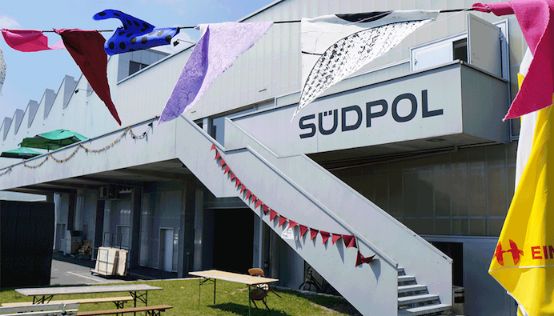
Due to a budget referendum, the city of Lucerne currently has no legally binding budget. Institutions such as the Südpol association, which rely on financial support from the city of Lucerne to fulfill their mission, are particularly affected by the lack of a budget. If voters approve the 2019 budget on 31 March, this financial support will be paid out from April 2019. If voters reject the budget, a new proposal will have to be drawn up, discussed in parliament and possibly put to a referendum.
The content of the loan and subsidy agreement with the Südpol association is based on the previous agreement. The earmarking of the funds for the benefit of the local and regional independent scene has been formulated more clearly and the performance targets have been specified more precisely, writes the city. At the same time, the Grand City Council is granting the Südpol association transitional funding until the Grand City Council has made a decision or until a legally binding budget is available.
IGNM-VS renews board
The Valais section of the International Society for New Music IGNM-VS has renewed its board. As of 2019, Marie N. Guex, Ulrike Mayer-Spohn, Hans-Peter Pfammatter, Manuel Mengis and Javier Hagen (President) are the new members.
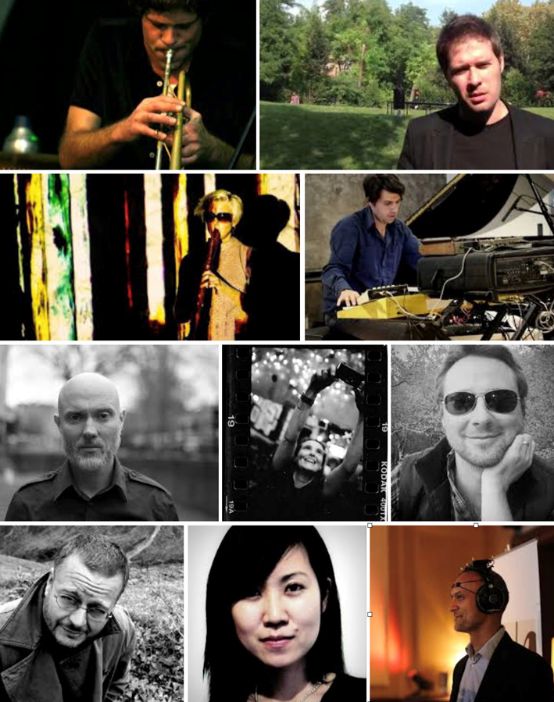
The IGNM-VS organizes the annual Festival for New Music Forum Valais at Leuk Castle, which has regularly made international headlines with Karlheinz Stockhausen's Helicopter String Quartet with the Arditti Quartet and Cod.Acts Pendulum Choir, among others.
The Forum Wallis has also acquired a new international board of trustees: In addition to Javier Hagen (IGNM-VS), Kotoka Suzuki (Tokyo/Chicago), Jaime Oliver (Lima/New York) and Reuben de Lautour (Istanbul/Auckland) are members of the jury of the 5th Ars Electronica Forum Wallis competition, the acousmatic concerts are curated by Simone Conforti from IRCAM Paris, and the artistic direction of the 1st Forum Wallis Academy for Composition Students is the responsibility of the Swiss-Argentine conductor and director of the Electronic Studio Basel Erik Oña.
Caption
from left to right from top to bottom
Manuel Mengis, Simone Conforti, Ulrike Mayer-Spohn, Hans-Peter Pfammatter, Reuben de Lautour, Marie N. Guex, Jaime Oliver, Javier Hagen, Kotoka Suzuki, Erik Oña
Second Stradivarius for the Festival Strings
The Festival Strings Lucerne now has a second Stradivarius violin at its disposal. Thanks to a collaboration with a Lucerne foundation, the orchestra now has a 340-year-old "Sellière" Stradivarius at its disposal.
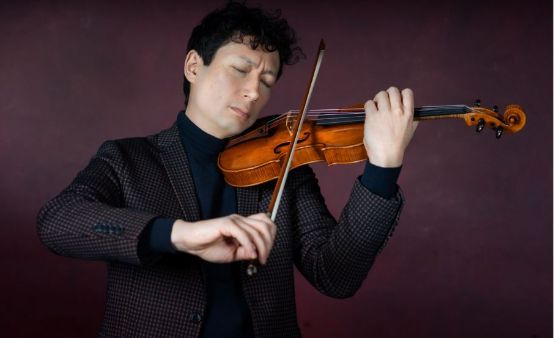
The historically interesting instrument was once played by orchestra co-founder Wolfgang Schneiderhan. Now it will be heard again for the first time at two concerts on March 5 at the Vienna Konzerthaus and on March 7 at the KKL Lucerne. Daniel Dodds, artistic director of the Festival Strings Lucerne, will play the two concerts for the first time on the violin, which was built before 1680.
The instrument was offered exclusively to Festival Strings Lucerne some time ago. For more than 100 years, it was part of the instrument collection of the Vorarlberg industrialist family Hämmerle, who have since emigrated to Argentina, and has been kept in a bank safe for the last few decades.
The Festival Strings Lucerne found a partner in the Lucerne-based Monika Widmer Foundation, which made the purchase of the instrument possible. She purchased the Stradivarius and is making it available to the Festival Strings Lucerne.
Rhythm is in the eye of the beholder
The visual experience also determines whether we are physically stimulated by a rhythm. This has been proven by a British research team.
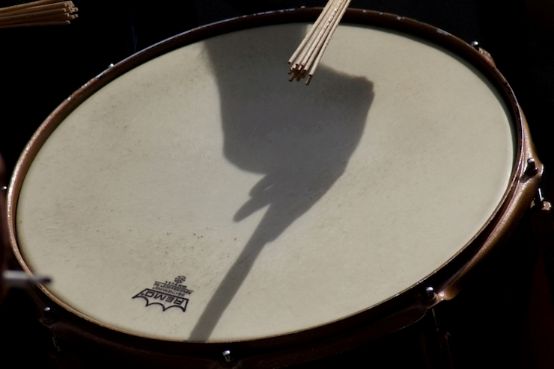
The team led by music psychologist Daniel Lloyd Eaves from Teesside University in the UK tested how test subjects are physically stimulated to tap or groove along when they watch a drummer. To do this, they either synchronized or shifted visual and acoustic experiences to the test subjects.
This showed that the visual experience plays a role in determining whether we are physically stimulated by a rhythm. According to the team, their findings support the importance of multimodal sensory experiences for the holistic experience of music.
Original article:
Daniel Lloyd Eaves, Noola Griffiths, Emily Burridge, Thomas McBain, Natalie Butcher, Seeing a drummer's performance modulates the subjective experience of groove while listening to popular music drum patterns, Musicae Scientiae, First Published February 1, 2019,
https://doi.org/10.1177/1029864919825776
Linked photo credits: Günter Havlena / pixelio.de
Baroque indulgence in Malta
The Valletta International Baroque Festival from January 11 to 27 featured many ensembles, including Les Passions de l'Âme from Bern.
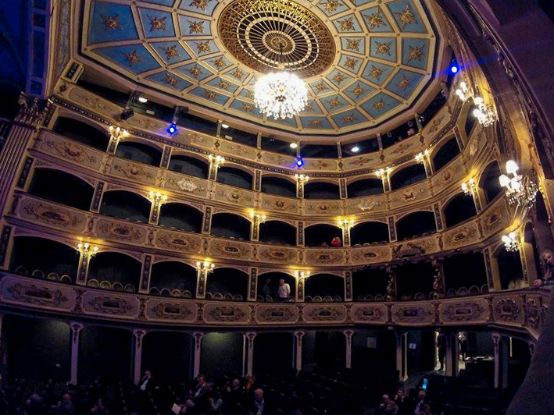
Malta and Baroque - not an obvious pair at first glance, but very much so at second glance. La Valletta, the capital founded in 1566, is pure Baroque, built of a wonderfully warm yellow-toned stone and unchanged since the 17th century. So it is only fitting that the music of the 17th and 18th centuries is celebrated here and in some of the equally enchanting towns in the surrounding area, and this year for the seventh time. The Valletta International Baroque Festival was initiated and has been run by the director of the Teatru Manoel, Kenneth Zammit Tabona, ever since. The Festival enjoys the full support of the Government, represented by the Hon. Owen Bonnici, Minister for Justice, Culture and Local Government, who has attended many of the concerts.
Between January 23 and 27, the days of the festival that can be discussed here, seven concerts took place, the first and last of which were unique highlights.
Once upon a time, in the Church of St. Catherine of Alexandria in Żejtun, a few kilometers from the capital, the presentation of the Dixit Dominus a 4 concertato by Niccolò Jommelli (1714-1774) and the Mass in D major by Giovanni Battista Pergolesi (1710-1736) by the choir and orchestra of the historic Collegio Ghisleri in Pavia, Italy, under the direction of Giulio Prandi (who, nota bene, conducted the entire evening inspiringly and from memory). Both orchestras played with incredible dynamic and agogic differentiation and commitment. Solo parts were performed so naturally and convincingly by members of the choir that it was not even deemed necessary to mention their names in the program ...
Bach and many others
The Valletta Archaeological Museum, housed in one of the city's most stylish palaces (dating back to 1571), hosted the lunchtime concerts in its Gran Salon, where visitors could watch the restoration of the murals. The Signum Saxophone Quartet, founded in 2006, performed there under the title Bach and Beyond Music by J. S. Bach, J. Chr. Bach, Steve Reich (1936), David Maslanka (1943-2017) and Marcelo Zarvos (1969). The four (still) young saxophonists Blaž Kemperle, Hayrapet Arakelyan, Alan Lužar and Guerino Bellarosa ignited a veritable firework display of virtuosity in the modern pieces, passing the musical balls to each other and tackling the baroque scores with great care and imagination. For a die-hard baroque fan, however, the saxophone Bach is difficult to digest, and the argument that such good music is still good music in all possible versions is not really convincing.
There were two further concerts at the same venue, both with the pianist Paul Gulda, who played on a wonderful harpsichord by Bruce Kennedy. The first featured part one of the Well-Tempered Clavier by Johann Sebastian Bach. Gulda played with skill and commitment, with very unconventional rubati and many changes of register. Between the individual preludes and fugues, he read out philosophical sayings (from the Dalai Lama, for example), which was not universally well received, partly because it came across as a bit preachy and partly because only listeners in the immediate vicinity could understand them. In the second concert, Gulda performed with the oud player and singer Marwan Abado. Compositions by Abado himself and other Middle Eastern composers were on the program, and the two delighted the audience with rousing improvisations. Once again, unfortunately only a small part of the audience was able to hear the numerous commentaries.
Handel's oratorio Il trionfo del tempo e del disinganno was performed in the Teatru Manoel. This venue was created in 1731 through the conversion of two noble townhouses; the Grand Master Anton Manoel de Vilhena was the commissioner and thus the namesake. Today, this gem is Malta's national theater and is one of the oldest theaters in Europe. A quartet of soloists and the Armonia Atena orchestra from Athens performed under the direction of George Petrou. One would have wished for a little more dynamic freedom in this beautiful performance and a hint of theatricality from the soloists.
In the Church of the Assumption in Qrendi, the Missa in illo tempore by Claudio Monteverdi (1567-1643), complemented by short works by other masters from the period, perhaps most notably the first performance in modern times of the motet In convertendo by Michelangelo Falusi (1645-1733). The eight singers of the Cantar lontano ensemble under the direction of Marco Mencoboni sang beautifully, albeit somewhat statically in terms of tempo and volume. Unfortunately, the announced vocal ensemble Monteverdi Project from Valletta barely made an appearance.
Prestissimo at the end
Once again at the Teatru Manoel, the festival came to a brilliant conclusion with the performance of the 6 Brandenburg Concertos by J. S. Bach. The Bernese baroque orchestra Les Passions de l'Âme (conductor and violinist Meret Lüthi) exuded a joy of playing and impressed with their stupendous virtuosity, and in the slow movements with their beguiling musicality. One may perhaps wonder why the outer movements, usually marked Allegro by Bach, had to be played in an incredible prestissimo. It seemed as if the musicians were mainly enjoying themselves.
A performance venue that has not yet been mentioned, but definitely deserves it: the wonderful, golden Co-Cathedral of St. John in Valletta, which, in addition to an original painting by Caravaggio and many other art treasures, has excellent acoustics. You can look forward to the next festival!
The author was a guest of the Valetta Baroque Festival.
Junghae Lee represents Switzerland in Tallinn
The Swiss-Korean composer Junghae Lee, who works in Basel, was chosen by the jury of the ISCM World Music Days 2019 to represent Switzerland at the festival with her work "Sorimuni 2" for chamber orchestra.
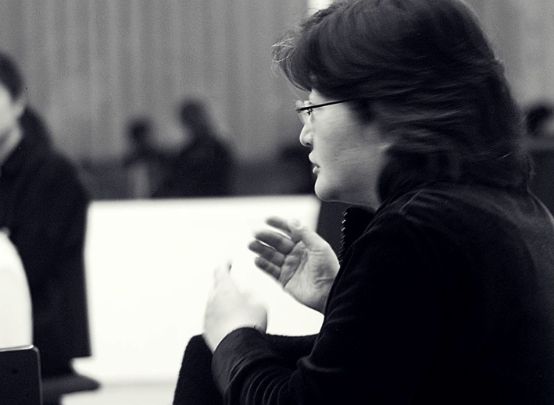
"Sorimuni 2" will be performed by the Tallinn Chamber Orchestra on May 5. In addition, "Shadow Art II" for vocalists, flute and electronics by Australian composer Paul Clift, who also lives in Basel, was selected as the Australian section's contribution.
Junghae Lee, born in Tokyo in 1964, grew up in Korea. She studied composition at Seoul National University with Byung-Dong Paik and from 1991 at the Electronic Studio of the Basel University of Music, specializing in electronic music. She attended master classes with Isang Yun and Toru Takemitsu. After a phase of intensive involvement with electronic music, she turned her attention increasingly to instrumental composition. Her work - with or without electronics - is characterized by special mixtures and a unique, highly expressive style.
The ISCM World Music Days is the annual festival of the International Society for Contemporary Music, founded in 1922, and will take place this year from May 2 to 10 in Tallinn, Estonia. It will be hosted by the Estonian Music Days, which is celebrating its 40th anniversary with the ISCM World Music Days. The works to be selected are submitted by the 65 national sections and presented to the festival jury.
Nicolas Farine and Egidius Streiff coordinated the submissions of the Swiss Society for Contemporary Music (ISCM Switzerland). This year, works by Katharina Rosenberger, Junghae Lee, René Wohlhauser, Nadir Vassena, Stephanie Hänsler, Benoit Moreau, Nicolas Bolens and Keiko Kikoutchi were submitted.
Women composers to Frankfurt!
Together with the Frankfurt University of Music and Performing Arts, the Archiv Frau und Musik is awarding the "Composer in Residence" scholarship. Applications are possible until March 15.
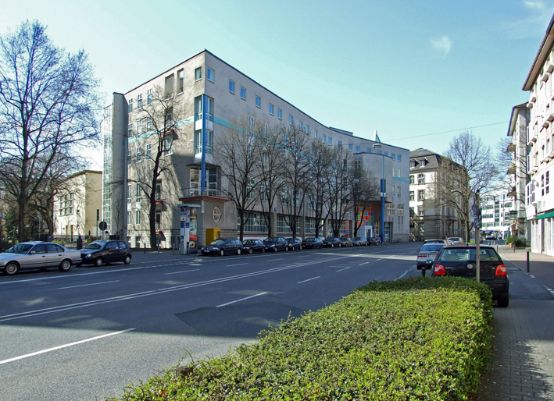
The Archiv Frau und Musik has announced that it is awarding its International Composer in Residence Scholarship in cooperation with the Frankfurt University of Music and Performing Arts (HfMDK), Institute for Contemporary Music (IzM), for the fourth time. It runs from mid-July to mid-October 2019, and composers of all ages and nationalities can apply for the three-month scholarship until March 15, 2019.
The archive and the HfMDK offer the composer the unique opportunity to use resources such as the studio for electronic music and acoustics and the international women's music network. During her stay in Frankfurt, the scholarship holder will compose a new work and rehearse it with HfMDK students. In addition, a school class from the HfMDK's Response school project will develop a musical "response" to one of her works under her guidance.
The jury will announce the name of the composer at the end of May. The newly created works will be premiered at the final concert on October 17, 2019.
The Women and Music Archive originated from the Internationaler Arbeitskreis Frau und Musik e. V. association founded in 1979. It currently archives the music of around 1800 female composers from the 9th century to the present day.
Sommets Musicaux honor violists
The 24-year-old English violist Timothy Ridout was awarded the Prix Thierry Scherz at the 19th Sommets Musicaux de Gstaad. The Prix André Hoffmann went to the 23-year-old French violist Jean Sautereau.
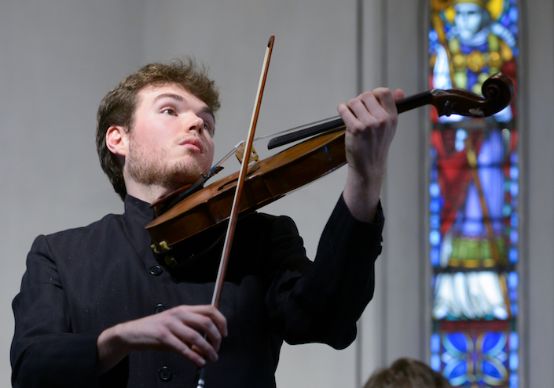
The Prix Thierry Scherz rewards the best interpretation of the festival's "Young Talents" series and enables the winner to make a CD recording. Supported by Renaud Capuçon, the artistic director of the festival, the jury - Gérard Caussé, mentor of the young talents, Yann Maresz, composer in residence and Patrick Peikert, director of the Claves Records label - unanimously awarded this year's Prix Thierry Scherz to Timothy Ridout.
In the second half of this year, the young violist will record a CD with the Bern Symphony Orchestra and the Claves Records label, which will also be responsible for promotion. The jury has also awarded Jean Sautereau the Prix André Hoffmann. The prize, endowed with 5,000 francs, rewards the best interpretation of the work "Soliloque" by Yann Maresz, the festival's composer in residence.
Fachard succeeds Farine at the SGNM
Lausanne composer Antoine Fachard succeeds outgoing Vice President and former SGNM President (2010-14) Nicolas Farine on the Board of the Swiss Society for Contemporary Music (SGNM/ISCM Switzerland).
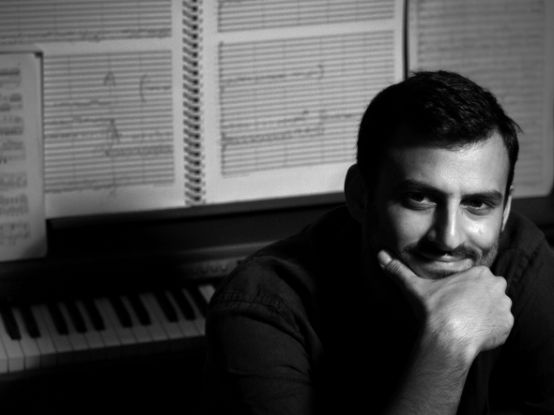
In addition, Denis Schuler from Geneva will succeed the retiring auditor Laurent Mettraux. Fachard was born in New York to a Swiss father and a Greek mother and grew up in Lausanne. He studied composition with Daniel Glaus, William Blank and Xavier Dayer, as well as with Lachenmann, Ferneyhough and Boulez. In 2015 he was Composer in Residence at the Composer's Next Generation program of the Geneva Ensemble Vortex. Fachard lives in Lausanne. Alongside him, Max E. Keller, Egidius Streiff and Javier Hagen (President) are members of the current SGNM Board.
The SGNM is the Swiss section of the International Society for Contemporary Music (IGNM/ISCM) and was founded in 1922 by Winterthur patron Werner Reinhart - the first Secretary General of the ISCM - as one of the first country sections of the ISCM. It is the Swiss interface to the ISCM and thus to the ISCM World Music Days, which take place in a different country every year and have also been held in Switzerland six times to date: in 1926, 1929, 1957, 1970, 1991 and most recently in 2004.
Wild and orderly learning
The 2nd Symposium for Pop-Rock-Jazz Pedagogy (PRJ) dealt with different forms of learning and debunked common prejudices.
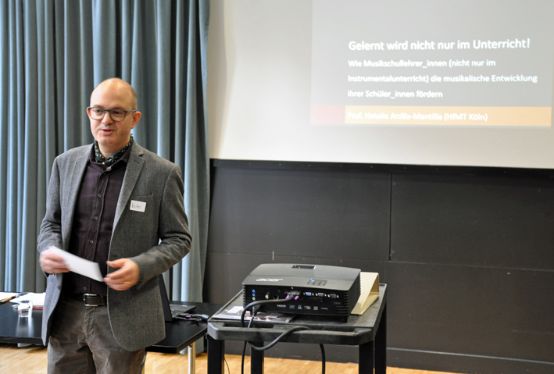
The PRJ Symposium on January 19, 2019 was small but nice, without a lot of fuss, but with substance. It was once again organized by the Bern Conservatory Music School in cooperation with the Association of Bernese Music Schools (VBMS) organized. The further education event for the pop, rock and jazz sector was opened up a little in the direction of general pedagogy compared to the first edition. Organizer Victor Wanderley emphasized that his symposium was not only aimed at PRJ teachers, but at representatives of all music genres. This opening up was very well received by the event, but one had the impression that the representatives of classical music did not (yet) feel addressed.
The event took place in a "come-together format", meaning that the participants were given plenty of space to exchange ideas and share their results and experiences in the plenary session. Three invited experts provided important input, led workshops and stimulated discussions.
It's all in the mix
Natalia Ardila-Mantilla, Head of Instrumental and Vocal Pedagogy at the Institute for Music Education Research at the Cologne University of Music and Performing Arts, conducts research on music education in formal and informal learning contexts and on the development of concepts for learning to make music in heterogeneous groups. She provided an exciting introduction with six questions about their personal educational history and what they believe they have learned in the various learning contexts. Everyone had to give their own answers in the plenary session. It was amazing to see the illuminating insights that emerged. Anyone who thought they could deduce the advantages of one form of learning or another was just as wrong as those who thought that informal learning was more suited to the PRJ sector and formal learning to the classics. The speaker used teaching profiles that she had created in her research work to prove that the two forms of learning occur more or less equally on both sides. She assumed four learning worlds: Classroom, ensembles, performance and private, all of which can be more or less formal or informal. It is crucial that there is a fruitful mix and that the teacher tries to influence the informal learning worlds of their students.
-
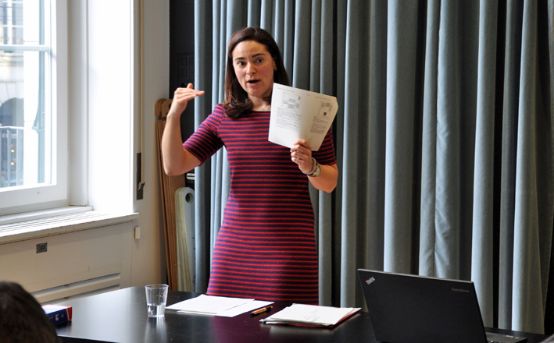
Natalia Ardila-Mantilla
Freestyle pedagogy
Nik Bärtsch, internationally successful jazz pianist from Zurich with a classical music degree, described his career as a music student in the 1970s and 1980s and spoke about the formation and maintenance of creative communities, his Club Exil, the Monday series with his "Ritual Groove Music" with workshops and concerts. "Creativity needs structures," Bärtsch is convinced. Local roots, a base camp, are important for him to be able to work internationally. That is why he goes into his "exile" every day, thereby defining home and exile as congruent. Bärtsch is an advocate of "freestyle pedagogy", which relies on personal initiative, on "doing, risking, learning". He had already acquired this "wild way of learning" during his challenging career as a music student. The Zurich music school initially had a hard time with his interests: he wanted to play drums and boogie-woogie and detested sheet music. These things were not part of the teaching culture at the time. So he had no choice but to learn self-taught and in bands. Eventually, the talented boy did meet understanding music teachers who "somehow followed him" and helped him to find his way.
-
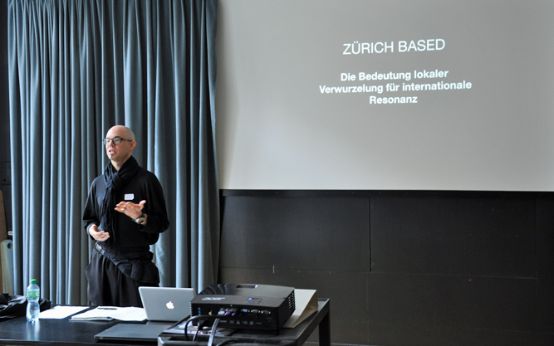
Nik Bärtsch
"Rhythm is it"
The pianist, drummer, mathematician and lecturer at the Jazzcampus Basel, Malcolm Braff, surprised us with a scientific approach to a phenomenon that is not considered academic: the groove. He takes the opposite approach, so to speak, and attempts to explain and formalize freestyle. Braff distinguishes between theoretical and musical-practical rhythm: "In folk music rhythm is never equal," he emphasized, adding, "in classical music it isn't either." The groove in swing is created by a slight shift and variation in note lengths. With a group of a quarter and two eighths, for example, this can mean an approximation of a triplet. This rule can also be used to make some classical pieces swing. A popular example is Bach. Even the Viennese waltz would not be a waltz if all three notes were played exactly the same length. Braff illustrated these rhythmic shifts graphically, starting from an even triplet as an isosceles triangle, and divided the rhythmic effects into "negative groove balance" (or "laidback"), "positive groove balance" (driving forward) and "taking off the ground/taking down to the ground" (phrasing through changing accents). The practical demonstrations drumming and at the piano with simultaneously played alternating rhythms on the left and right were impressive.
-

Malcolm Braff
The next PRJ Symposium will take place on January 11, 2020.





